Your Cart is Empty
Free Shipping on orders over €75 (Germany) | €125 (International) – We're on a short shipping break, but the webshop is open! Next shipping date: April 30
Free Shipping on orders over €75 (Germany) | €125 (International) – We're on a short shipping break, but the webshop is open! Next shipping date: April 30
Notions & Gifts
Books & Magazines
Patterns
- Annika Scheer | Rosemary & Pines Fiber Arts
- Ayano Tanaka
- Barbara Gottwik
- Crystal Hiatt
- Elena Solier Jansà
- Emily Joy Rickard
- Emma Ducher
- Fiona Alice
- Fiona Munro
- Imke von Nathusius
- Jennifer Brou
- Jill Thompson Beach
- Joan Forgione | Paper Moon Knits
- Julia Exner
- Kjerstin Rovetta
- Ksenia Naidyon | Life is Cozy
- Madeleine Renarde
- Makenzie Alvarez
- Making Stories
- Maria Muscarella
- Marina Skua
- Marthe Forodden
- Rebekka Mauser
- Renate Kamm
- Susan Schädler
- Tania Dejoie
- Valentina Cosciani
- Vanessa Pellisa
- Annika Scheer | Rosemary & Pines Fiber Arts
- Ayano Tanaka
- Barbara Gottwik
- Crystal Hiatt
- Elena Solier Jansà
- Emily Joy Rickard
- Emma Ducher
- Fiona Alice
- Fiona Munro
- Imke von Nathusius
- Jennifer Brou
- Jill Thompson Beach
- Joan Forgione | Paper Moon Knits
- Julia Exner
- Kjerstin Rovetta
- Ksenia Naidyon | Life is Cozy
- Madeleine Renarde
- Makenzie Alvarez
- Making Stories
- Maria Muscarella
- Marina Skua
- Marthe Forodden
- Rebekka Mauser
- Renate Kamm
- Susan Schädler
- Tania Dejoie
- Valentina Cosciani
- Vanessa Pellisa

Issue 10 Patterns – Now Available as Individual PDFs!

All Patterns
About Us
We're here to help you stitch sustainability into every aspect of your making.
With our carefully curated selection of non-superwash, plastic-free yarns and notions, we have everything you need to get started on your next project - and the one after that.
Here's to a wardrobe of knits we love and want to wear for years to come!
We're here to help you stitch sustainability into every aspect of your making.
With our carefully curated selection of non-superwash, plastic-free yarns and notions, we have everything you need to get started on your next project - and the one after that.
Here's to a wardrobe of knits we love and want to wear for years to come!
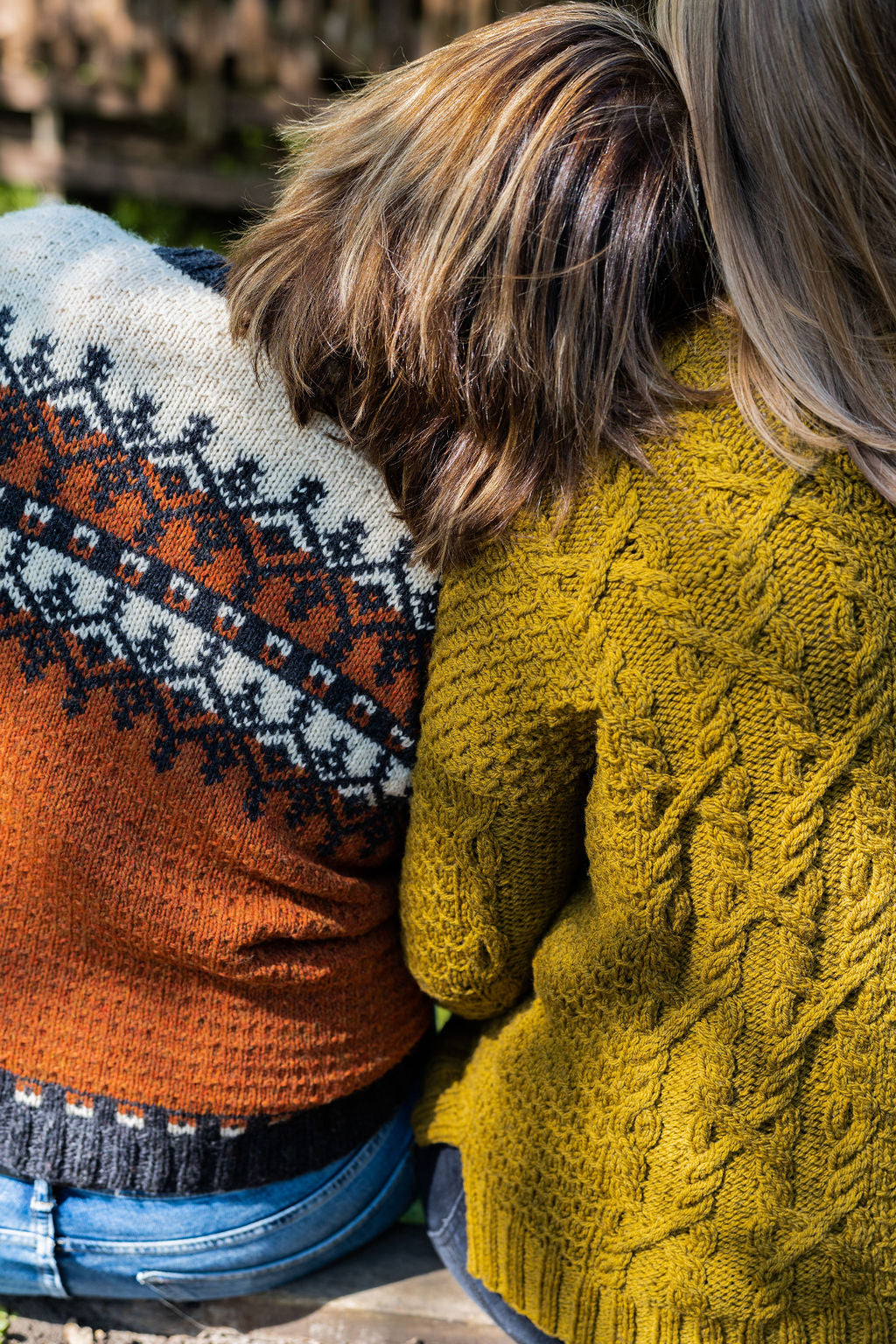
Our Sustainability Pledge
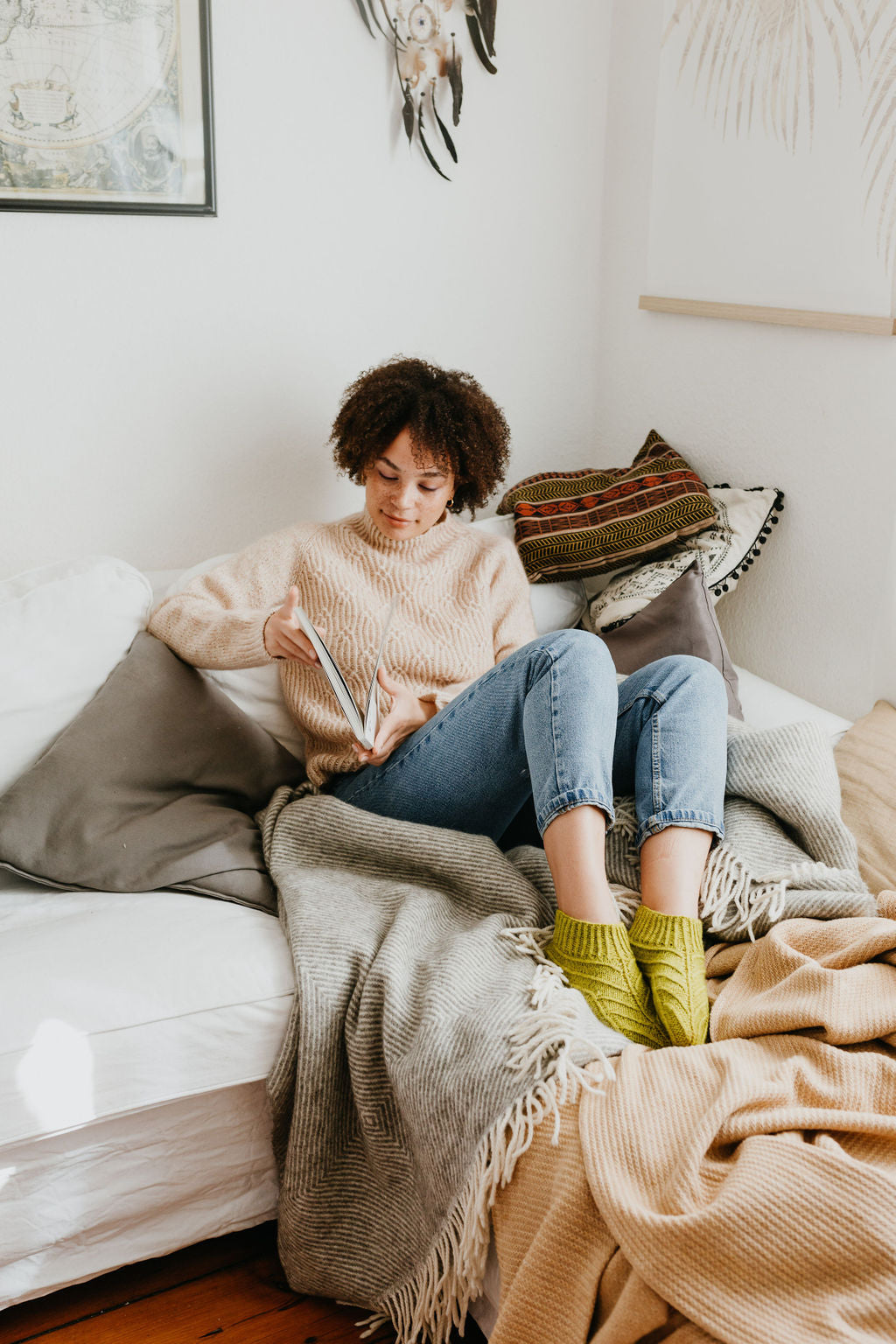
Our Blog
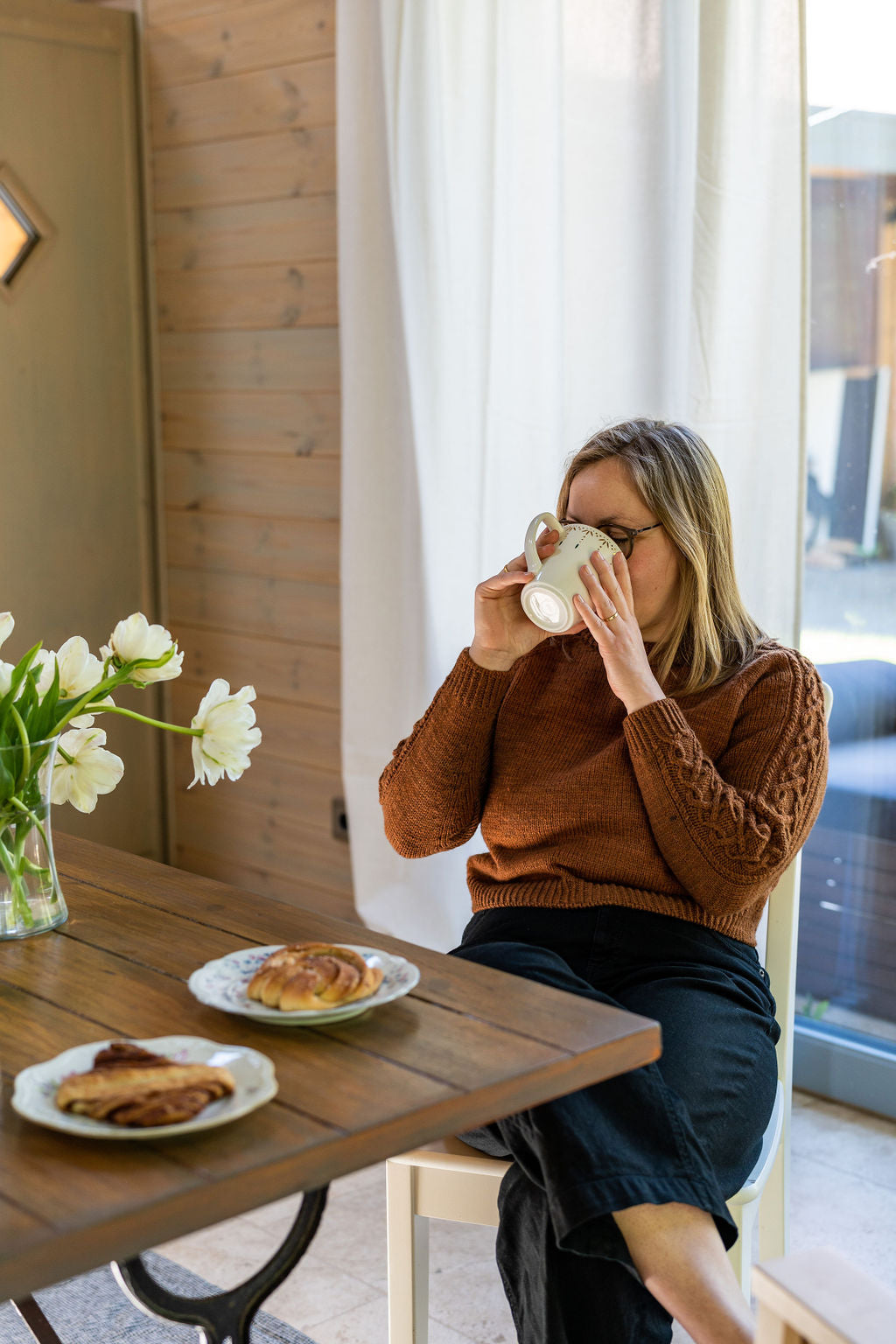
Our Podcast
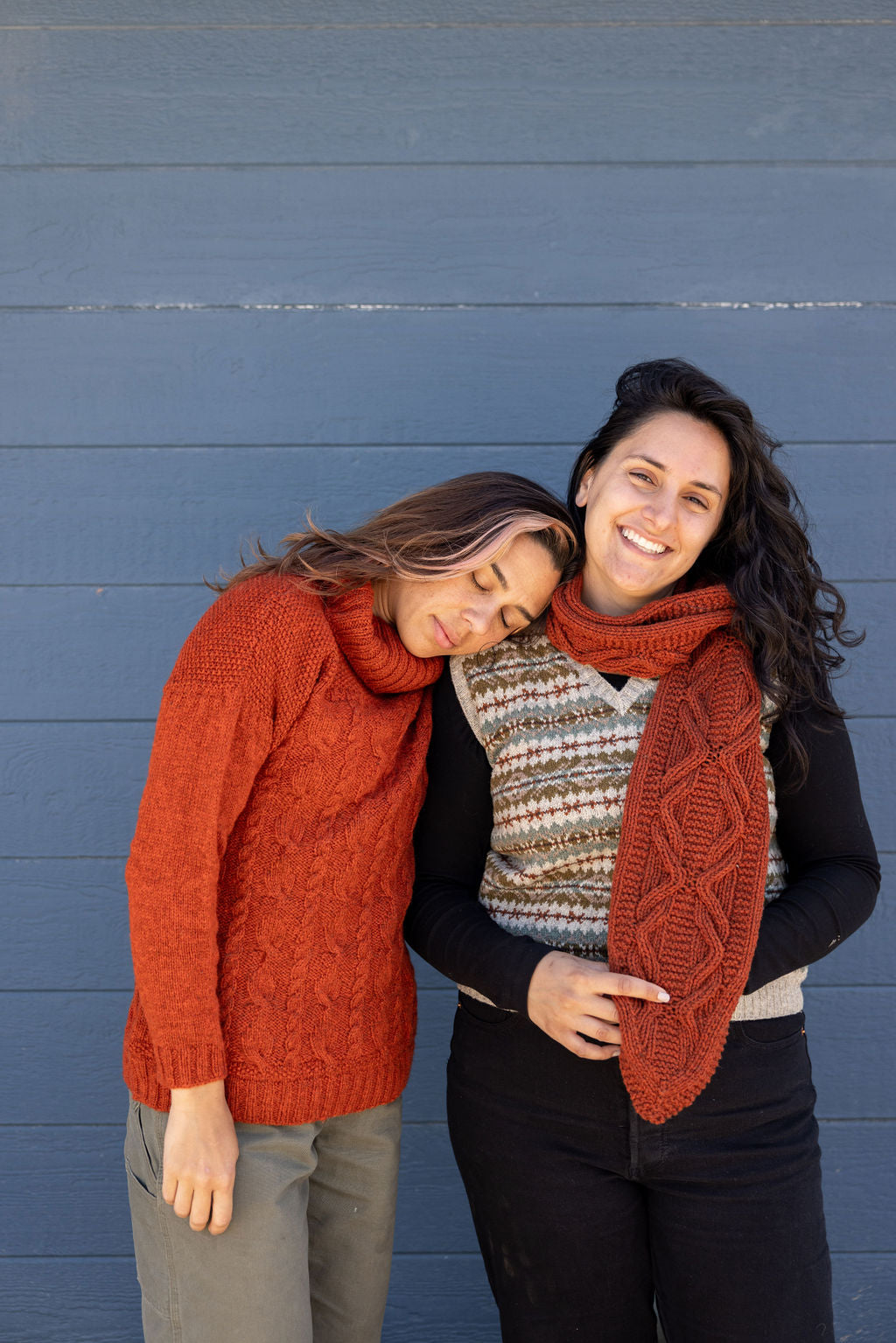
The Making Stories Collective
Our Submission Calls - What Makes A Great Submission?
January 31, 2020 13 min read 1 Comment
Hello folks! Today I want to share a post with you that we have wanted to write for a while - Our CFS's ('Call for Submissions') and what we look for from a submission. If you are on our call for submission email list (and if you are not and want to be head here!), you will probably remember that we sent out several CFS's last summer. This was because Hanna Lisa was going on maternity leave, and we needed to do a lot of the work for Issues 2-4 ahead of time. While this worked perfectly for giving Hanna Lisa the time off and rest she deserved, we quickly realised it wasn't ideal for our designers and that there were other areas of our submission process that we could improve on. While the last few CFS's were still fresh in peoples minds, we decided to send out a little survey to everyone on our designer list to ask them their thoughts. We are so grateful to everyone who took part. The ideas you shared with us about what was working and where we were could do better has been invaluable, and when we release our CFS for Issue 5, you will see that feedback reflected in the changes we are making. It also showed us there was an excellent opportunity to write this blog post to share with you all the details of not only what we will be changing, but what we are looking for in a submission. We hope it will be helpful to all of you who are interested in submitting to Issue 5, and particularly new designers who may feel a little anxious about sharing their work. So enough of my rambling, let's get to the good stuff!
What is Changing?
Write the pattern & knit the sample at the same time:
One of the most significant changes we are making is not to our submission call, but to how we work with our designers - we will no longer be asking you to write the pattern before knitting the sample. Up until now, we've been asking you to write up your pattern which then went into tech editing and after the pattern had been tech edited, we sent it back to you asking you to knit up the sample. On paper, this felt like a great way to guarantee a well thought out pattern and save our designers a lot of ripping out as they would be working from a tech edited pattern. In reality, we now realise this is quite limiting if you are uncomfortable working this way, and by changing this, our designers will have the freedom to write and knit the sample simultaneously.
Longer submission deadlines:
We will make sure to give you plenty of time to submit an idea to us. For Issue 5 you will have five weeks to put together your submissions, and we will be doing this for all future calls too.
Less abstract & hopefully more inspiring topics:
Quite a few of you mentioned that you found the topics for our CFS's either uninspiring or too abstract. Ouch. But, onward and upward, as they say: For Issue 5, we're asking our community what they'd like to see from us topic-wise, and we'll try our best to balance our desire for topics that can be interpreted broadly with your wish for more concrete topics. We'll also make sure to include a clear and hopefully inspiring description of the topic!
Issue-specific mood board:
One thing our survey showed us is that you need more from our mood boards. From now on, we'll be providing you with much more visual inspiration and a specific mood board for each CFS!
No previously published pattern necessary:
Up until now, we've always asked you to include a previously published pattern with your submission. You can still continue to do so, but we've also understood that this might be intimidating for newer designers, so it's not a requirement anymore!
It was so helpful to find out more about what you wanted from us for our submission calls. Still, the survey also highlighted that many of you were newer designers, who were unsure of what we wanted from a submission or felt a little intimidated to share their work, not just with us, but to anyone. We welcome submissions from designers of all experience levels, but we know just how intimidating it can be to take that step and share your work with others. We thought this was a fantastic opportunity to write a detailed post sharing how to put together a great submission, and what publishers such as ourselves are looking for. We hope you will find it useful!
How To Write A Great Submission
When it comes to submitting to a publication, how you put your submission together is the first, and largest hurdle to being accepted. You may have the best idea in the world for a pattern, but if you don't communicate it to the publisher, it gets overlooked. Which leaves the question - what makes a great submission? To answer this question, it only made sense to ask Hanna Lisa herself, and she sent me a plethora of invaluable information that I want to share with you here:
The minimum you should include:
-
Everything we are asking for in the CFS. This seems like a no brainer, but you'd be surprised how often details we ask for are left out. If we ask for yarn suggestions, we want to hear them. The same goes for a sketch and swatch.
-
Present it in a clean, easy-to-read format, ideally all in one PDF. I've always found Pages handy if you are on a Mac, but Adobe works great too!
How to make it better:
-
To improve your submission, you can start to build on the above to tailor it to the publication in question. For example, you could reference our previous work, the submission mood board, our general aesthetic and our mission in the submission call.
-
If you are submitting an idea for a garment, it's essential to bear in mind that we work with standard sizing and state what those measurements are in the CFS. If your submission lists different sizes to what we use, the chances are it's not going to work for us, and your submission will get passed over. We provide the measurements so you can check to see if a stitch pattern you are using will fit into those sizes, so always take the time to check.
The Icing On The Cake
-
We have a list of Yarn Partners that we work with for our magazine (you can find the list here!), and it's fantastic if a designer takes the time to look them up and suggest a yarn from one of them. If the swatch is also in that yarn, that really is the icing on the cake! But please, do not feel like you should go and spend money on a particular yarn just to swatch, you don't need to. If it's already in your stash though, absolutely use that for the submission.
To round out this section, I want to end with one last thought Hanna Lisa shared with me:
'In terms of the content, I'm looking for wearable, but fun-to-knit designs - it doesn't need to reinvent the wheel, but it has to have a solid construction and a bit of creativity. It's always nice if I see a design where a designer has married their creativity with an understanding of what people like to knit - like a really well-done colourwork jumper in a nice DK weight yarn.' - Hanna Lisa
But How Do you Put That Into A Submission?
So all the above information is excellent, however, that is a lot that we are asking you to organise into a clean, single sheet PDF, and for a new designer, it can feel super intimidating. Before I worked for Making Stories, I submitted several times to their call for submissions. Some were successful, and some were not. For this post, I thought I would share an example of one of my submissions so you can see how I communicate my design ideas with a publisher. Please don't misunderstand; I'm certainly not saying that the way I do this is the perfect way to put together a submission and if you do this you'll have success every time. It is just how I do it, and I've had work accepted fairly often using this approach.

Let's break it down:
-
Swatch: For me, this is the most crucial part of the submission. It's going to communicate to the publisher the look and feel of my design and clearly show any stitch pattern I wish to use. If I am unable to swatch in the yarn I am suggesting, I make sure to use one that is of similar weight and fibre content. Take a clear photo in natural light, making sure to capture any critical details. This may mean including more that one photo.
-
Sketch: This is the part of the submission that many people struggle with, me being one of them! If you aren't a fantastic drawer, please don't stress about it, and please please don't leave the sketch out because you are embarrassed about it. No one is expecting it to be a masterpiece. The sketch is there to show how you imagine the look and fit of your design. If it's for mittens, where is the cuff landing on the hand? If it's a garment, is it close-fitting? Roughly where does the colourwork yoke end? Etc. For items such as shawls, a simple flat drawing showing the shape and where any stitch patterns begin and finish are all you need. If a piece is knit in a specific direction, it's always nice to show that on the sketch as well. For the example above, I used a fashion croquis and sketched over the top.
-
Design Details: This is a quick overview of the design so I can quickly communicate my idea to the publisher. You don't want to cause any confusion and leave them with questions, which leads me to the next section...
-
Construction breakdown: In this section, I give a lot of information that you don't necessarily need to provide. Honestly, though, this part is as much for me as it is for whoever is looking at the submission. There's nothing worse than pitching an idea, and it gets accepted, only to realise that it's not going to work (see standard sizes above). By doing this, it's clear in my mind how I'm going to execute this design. It also shows the publisher that I know what I'm doing and they can be confident that if they work with me, I won't suddenly be changing something they've accepted. The finished piece will look like the submission.
-
Swatch details: I like to give all the details of my swatch because as much as a clear photograph communicates a lot, it won't show everything. Giving gauge, yarn, and needle size will give the publisher a good idea of the fabric qualities.
-
Yarn Suggestions:When I first started designing, I always thought this was a waste of time. After all, the publishers will be choosing what yarn you use, so why suggest something to them? How wrong I was! Suggesting a yarn will show the editor two things. One - what your vision is for this design. If you want to knit this in a 100% linen yarn, it will be a very different piece then if you were to suggest a cashmere/silk blend. Two - it will show them that you have done your homework about their publication. It's always important to show you are familiar with the work someone is doing. An obvious suggestion here would be, if you are submitting to Making Stories - a company that champions sustainability and natural fibres - do not suggest an acrylic or superwash yarn. And as Hanna Lisa has already pointed out, looking to see who publications usually work with and recommending those companies is very much appreciated.
-
About Me: A short paragraph telling the editor about yourself is always an excellent idea. You don't have to give your life story, but if they haven't worked with you before it's nice to know a little about you, especially if your interests and ideologies aline with theirs. When I submitted the above to Making Stories, I knew that they focused on sustainability and natural yarns, something I'm also interested in. So I shared that with them! It's just another way to tell whoever is reading your submission that you could be an excellent fit for their magazine. That being said, never lie. Be your authentic self; that's what a publisher wants to see.
-
Contact Info: Include all the applicable ways the publisher can see your other work and find out more about you, and make sure you add the actual link, don't just write it. If you have an awesome Instagram feed that you would like them to see, make it really easy for them to find it without leaving your PDF.
-
Inspiration:So this isn't included in my sample submission above, but it is something I add to submissions now in the 'design detail' section as many publishers ask for it. It can be a bit of a struggle for some people (I am one of those people!). Sometimes, you may feel like you have to be quite soul-bearing to capture an editors interest, but that is not the case. If your idea has come from a very specific place and has a poignant story that you want to share with the publisher, that's fantastic! It's always interesting to hear what has inspired a piece. Sometimes though, you were simply inspired by the mood board (that's where my inspiration often comes from!). I know that doesn't seem like an exciting thing to share, but just be honest. That's what the mood board is for, and it's nice for the publisher to hear it's helped you.
Further reading:
As I said, this is just how I put together my submissions, and there is a lot more information out there on the internet. Take a look at some of the following blog posts for more on the subject:
Why Was My Submission Rejected?
So you've put together a great submission, your idea was solid, the layout was perfect, and you included everything that was asked for in the CFS. And then comes the following email - thank you, but your submission wasn't selected this time. It's a huge blow. I've been there many times, and as much as you tell it not to, your brain will often shift to - it was a terrible idea, and they hated it, go eat chocolate and never try again (damn you, brain!). I'm here to tell you that's not true. Continue eating the chocolate, but don't give up. Sometimes even the best submissions get rejected. For example, when I was putting together this post, I sent over all the submissions I've ever sent to Making Stories and asked Hanna Lisa to pick out the one she thought was the best example of a great submission, and she picked my JEWELS one. If you have ever read JEWELS, you know that design is not in there. It got rejected! I got the email, I ate the chocolate, and I'm not going to lie to you, I was pretty fed up. But what I know now is that it takes much more than a bunch of great submissions to make a publication. They have to all work together and tick a lot of boxes. Perhaps the editor knows their readers prefer top-down construction and yours was bottom-up, maybe the stitch pattern was too similar to a design in a previous issue, it could even be as simple as there were a ton of sock submissions this time around and you submitted one too. Hence, the competition was just super high, and another design worked a tiny bit better than yours. The takeaway from this is if you have sent us a well thought out submission and it gets rejected, the chances are it not you; it's us. It's easy to say, but don't get despondent, and never, ever give up.
Something I'd like to add:
At this point, I also want to add a little note for all designers, but particularly new or less experienced ones. In the feedback from our survey, many of you talked about a lack of confidence, which I understand entirely. It's a big thing to put yourself out there, and there is no pressure to do so until you feel ready. One comment in particular though spoke of a fear that we would receive a submission and laugh at it because it wasn't good enough. That made me really sad. We know how hard it is to share your work with other people, especially when that involves potential rejection, and we consider it a huge honour that you would take time out of your day to put together a submission for us. So I want to make something very clear; We will never, ever, laugh at or ridicule the work you share with us. We will always treat you and your work with the utmost respect, and if this is something that has been holding you back from submitting to us in the past, I sincerely hope this post gives you the confidence to take that next step, and share your work with the world. Because I have a feeling it's fantastic!
My Submission Was Rejected, What Now?
If your submission was unsuccessful this time, don't despair! It wasn't a waste of time. I have way more submissions in my reject folder than accepted, and there are two things you can do with them.
-
Keep an eye for other submission calls. Another publication may have a theme that your submission would also work for, and with a few tweaks, it is ready to go. Changes I would make would be to any references to the previous submission. If you talked about a particular image on the mood board, for example, take that out. Tailor the submission to the new submission call where you can, while of course, always being authentic to who you are.
-
Self-publish. If you got extremely excited about this idea and want to get to work on it, self-publishing is the way to go. You've already got your excellent idea in a great submission, so you're in an ideal position to approach yarn companies and indie dyers to collaborate and get yarn support. As with the above, tailor the submission to whom you are reaching out. With yarn support, remember that this is about collaborating, not just scoring free yarn. Be clear about what you are offering in return for their support, and make sure this is something you can fulfil within the timescale you set.
I hope that today's post has offered plenty of information and support in sending submissions, not only to us but publications in general. If you have any thoughts or tips of your own you would like to share with everyone then please, pop them in the comments below. We'd love to hear more! As always, if you wish to discuss anything above with me privately, you can reach me by email at claire@making-stories.com.
1 Response
Leave a comment
Comments will be approved before showing up.
Also in Blog

6 Joyful Spring Knitting Patterns - My Current Favorites!
April 10, 2024 4 min read
Hi lovelies! Spring has sprung here in Berlin – as I am typing this (mid March), the buds on the chestnut tree out the window are a few days away from bursting, the forsythias are in full bloom, and our strawberry plants have started their comeback as well (leaves so far, but Aurin checks every day for berries :)).
So it's no surprise at all that today's blog post is very much inspired by the sun and the warmer days to come! I have put together a sweet roundup of 6 joyful spring knitting patterns, all of which I'd love to have on my needles soon. (If someone can get me an extra day or two per week to knit (oh, and to spin), I'd love that!)
The three yarns I've paired them with are my favorite spring / summer yarns: De Rerum Natura's Antigone, a delightful sport-weight linen yarn, Wooldreamers' Saona, a 50% Spanish cotton, 50% Spanish wool blend, and Natissea's Pernelle, our newest spring yarn: A 100% European hemp yarn!

Get to Know: Pernelle, our first 100% hemp yarn!
April 02, 2024 3 min read 1 Comment
Hi lovelies! As you might know, we are slowly, surely expanding the portfolio of the shop – I am always on the lookout for wonderful sustainable yarns that might fill gaps we still have, and one that was on the list since last summer was an additional spring / summer yarn.
When I learned about Natissea, a French yarn company dedicated to organic plant yarns, from Audrey Borrego last year, I immediately contacted them to order some samples. As soon as I had Pernelle, their 100% European hemp yarn, on the needles, it was love – grippy, but not ropey, with a lovely drape that only got stronger after a good washing and blocking session.
The shade cards had me swooning too – a really comprehensive, well-composed range of colors with something for everyone in it, from neutrals to spring-inspired pastels to deep jewel tones.
So I was so pleased when Natissea accepted us as a stockist – and I am extra excited to introduce Pernelle to you. Our first 100% hemp yarn, perfect for summer tops, T-Shirts, and lightweight sweaters!
I reached out to Mathilde over at Natissea and she graciously agreed to answer a few questions about Pernelle. I loved reading her answers!

Issue 11 - in and out by Liza Laird
March 11, 2024 1 min read 2 Comments
Hello lovelies!
I am back today with a slightly unusual post that starts with a big, big apology to Liza Laird. Liza is a wonderful author (you might know her book Yoga of Yarn), knitter, teacher and yogi, and we were supposed to publish her beautiful poem "in and out", inspired by the ocean, in our Issue 11, "Seashore".
While I was putting the final touches on our layout, I realized that we had a spread too many (we always print in increments of 4 pages, or 2 spreads) and inadvertently cut the spread with Liza's poem instead of the photo spread I meant to delete.
Who Is Making Stories?
We're a delightfully tiny team dedicated to all things sustainability in knitting. With our online shop filled with responsibly produced yarns, notions and patterns we're here to help you create a wardrobe filled with knits you'll love and wear for years to come.
Are you part of the flock yet?
Sign up to our weekly newsletter to get the latest yarn news and pattern inspiration!
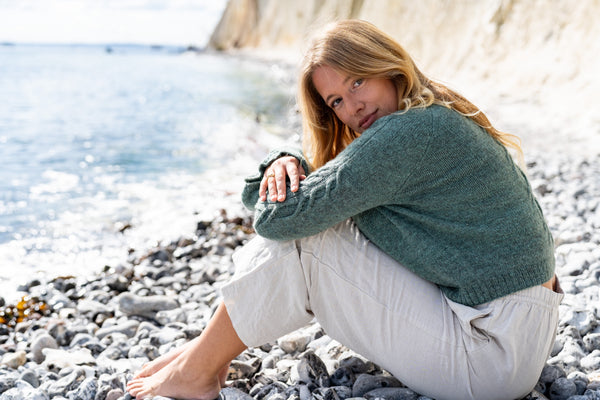
Join the Making Stories flock!
Every Tuesday our newsletter arrives in your inbox, full to the brim with Making Stories goodness. If you would like to join in on the fun, fill in the form below.
As a thank you, we gift you a digital publication of your choice!

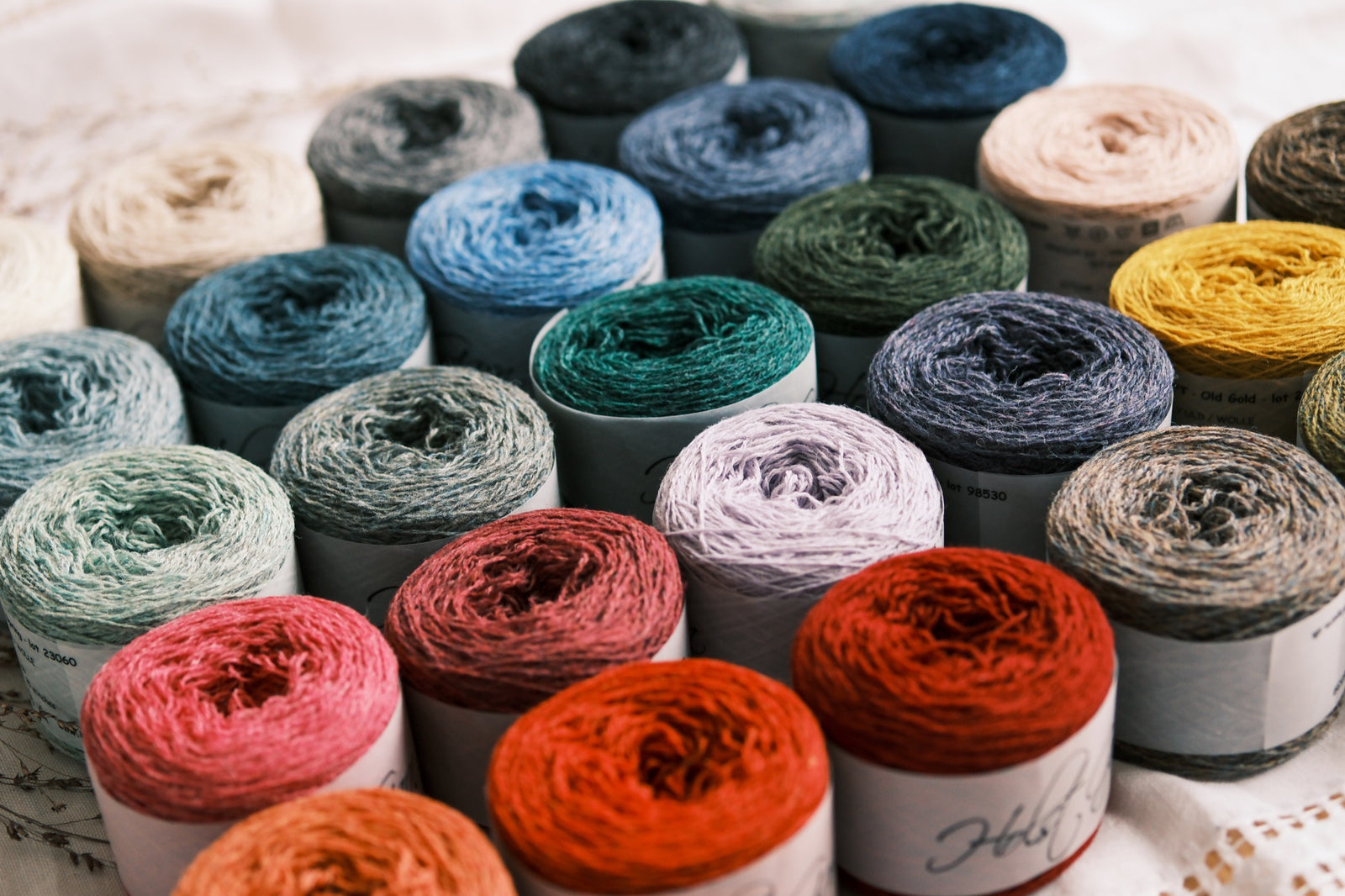


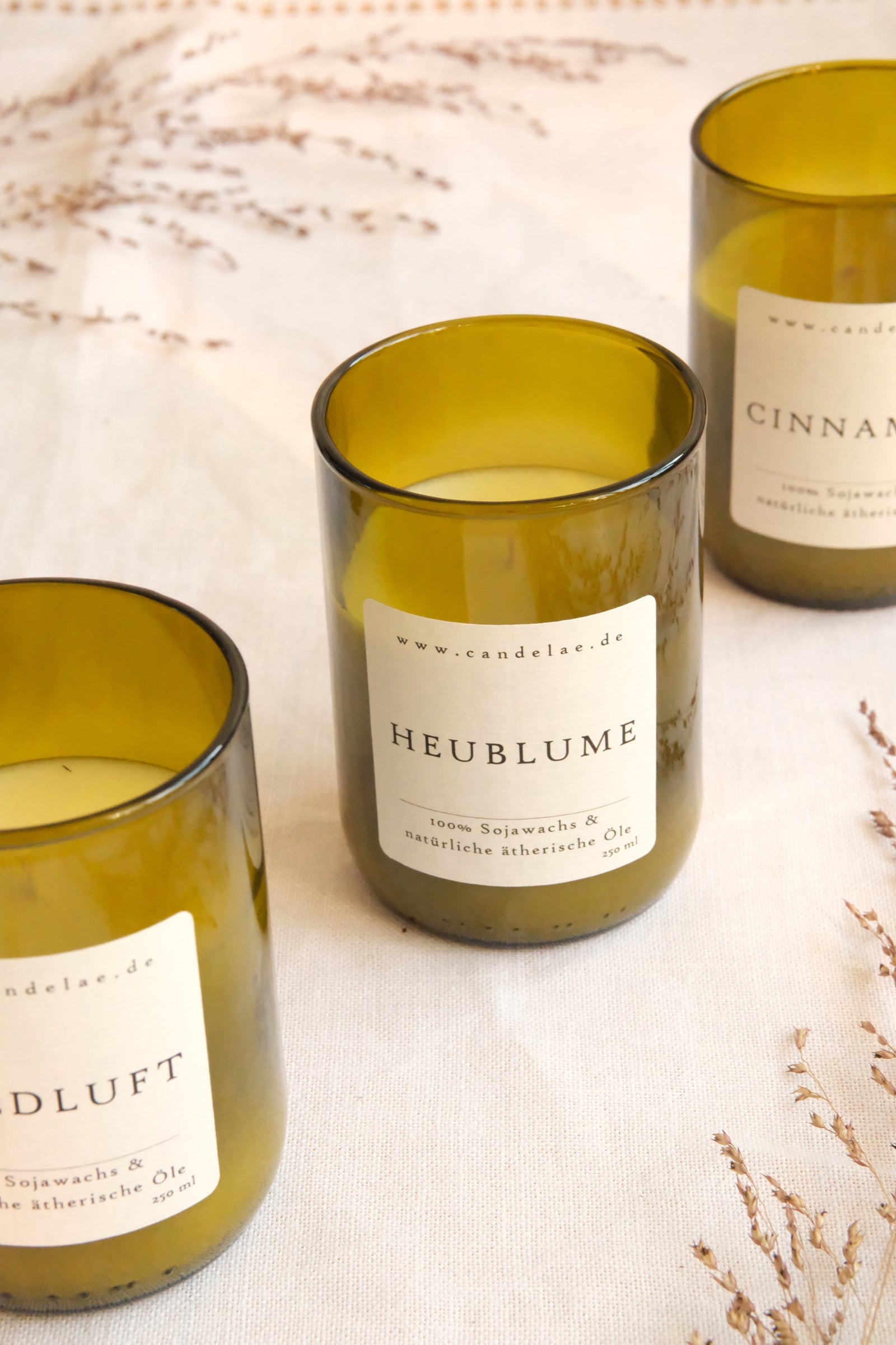


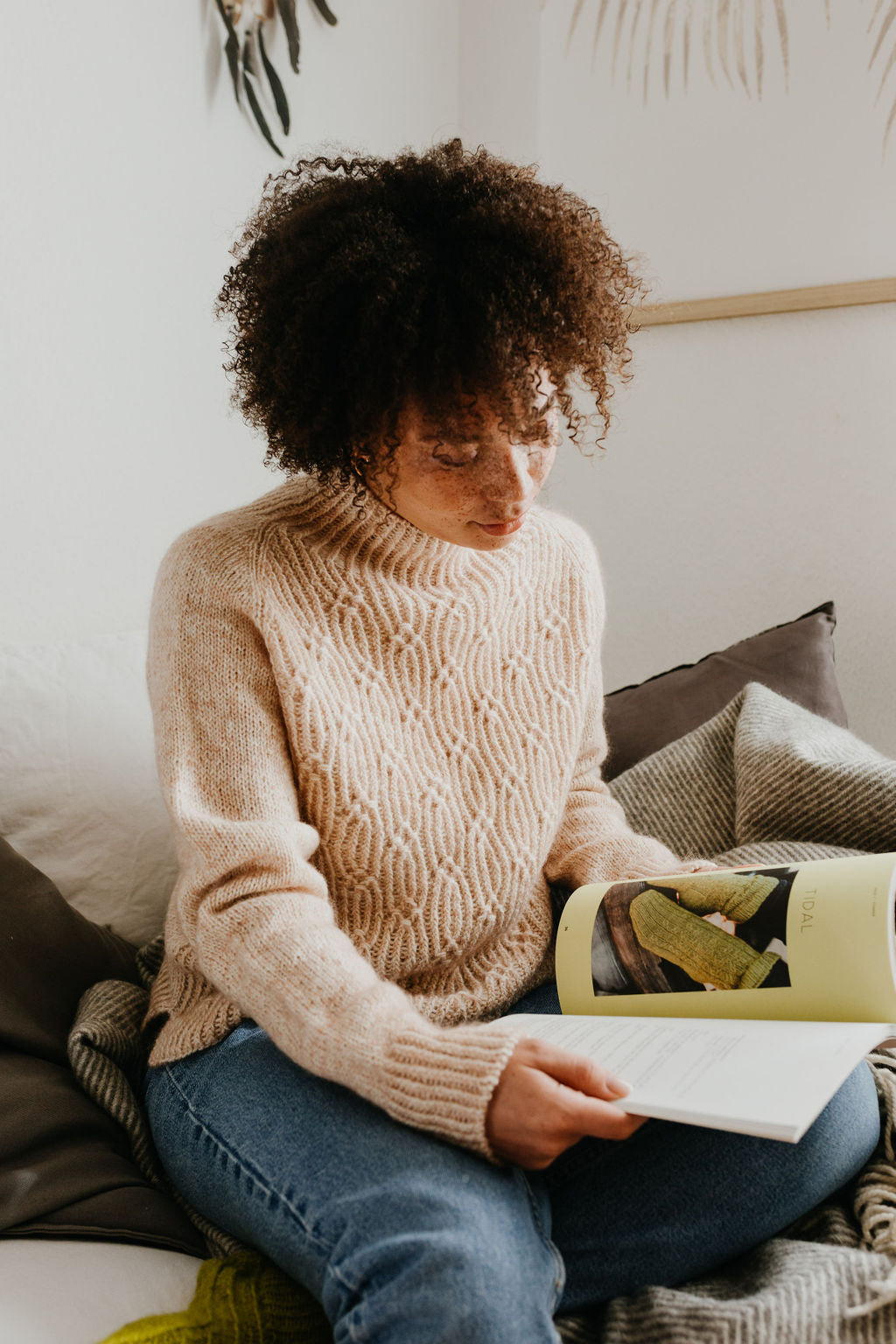
Sarah Wylie
February 05, 2020
Thank you for this, I’ve never had a submission accepted yet and it would be easy to give up, but having more of an idea of what is looked for really helps.
Sarah